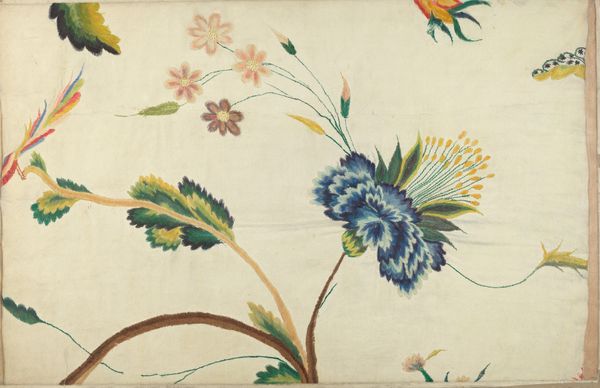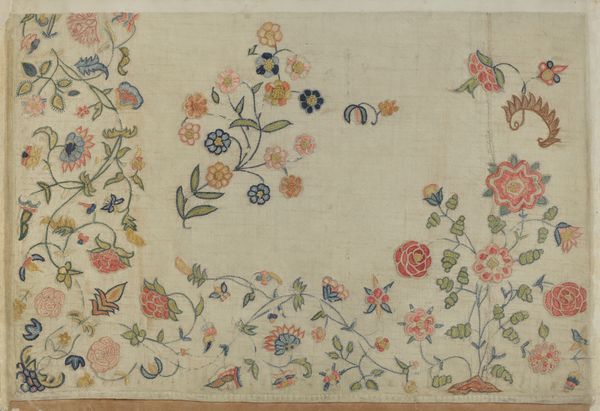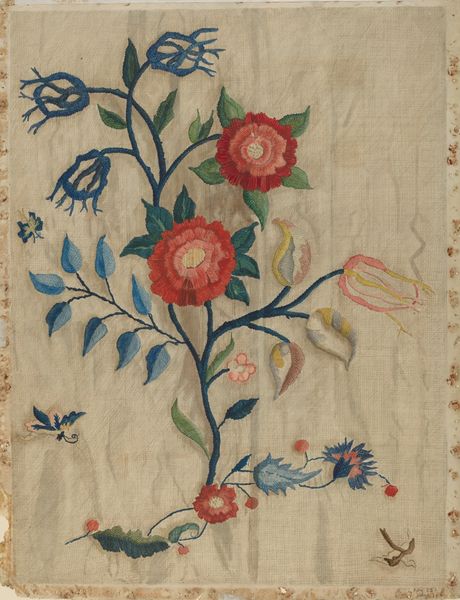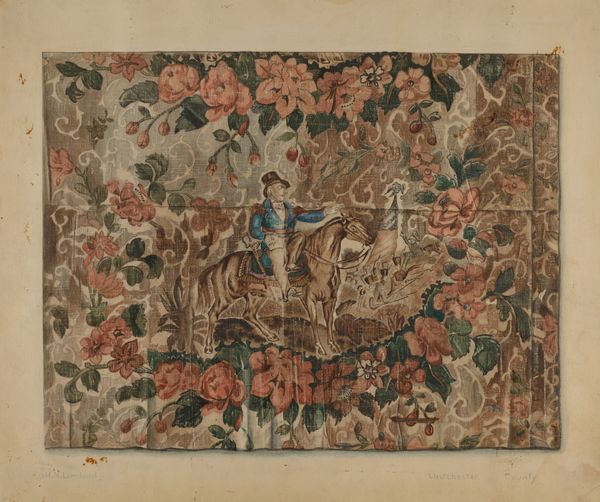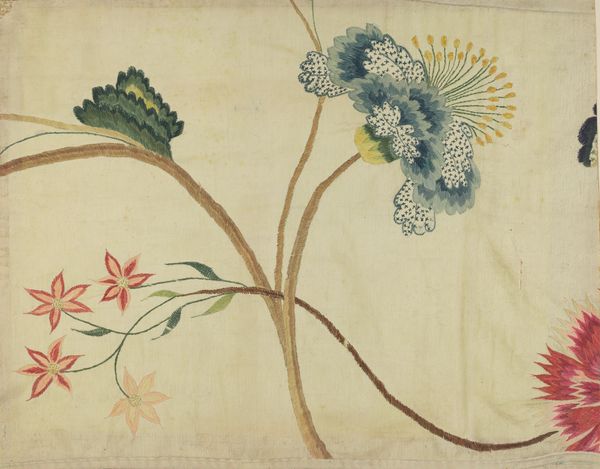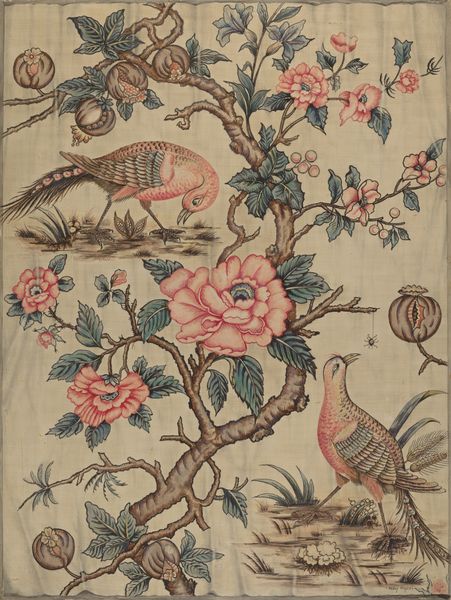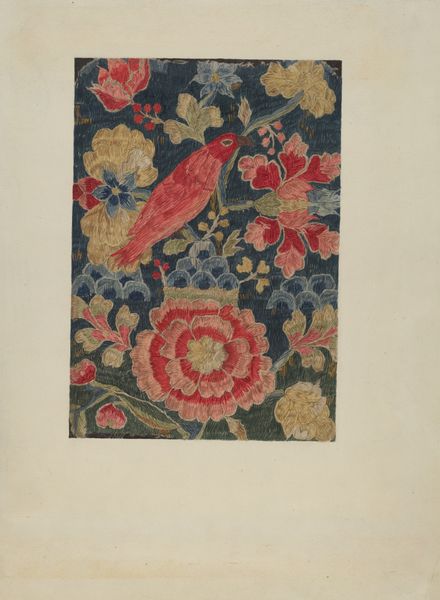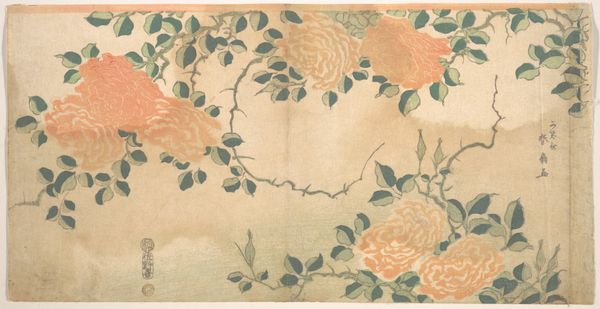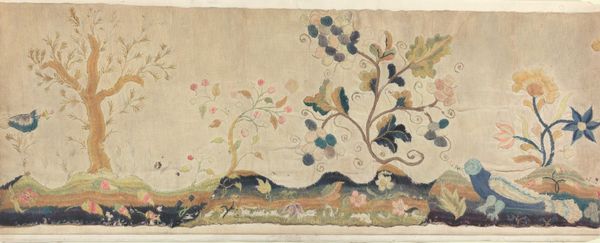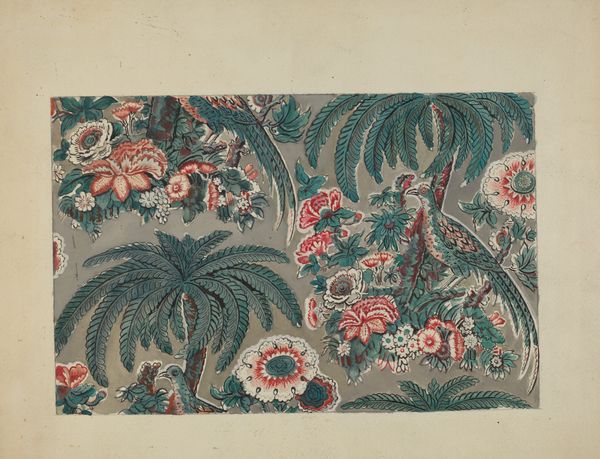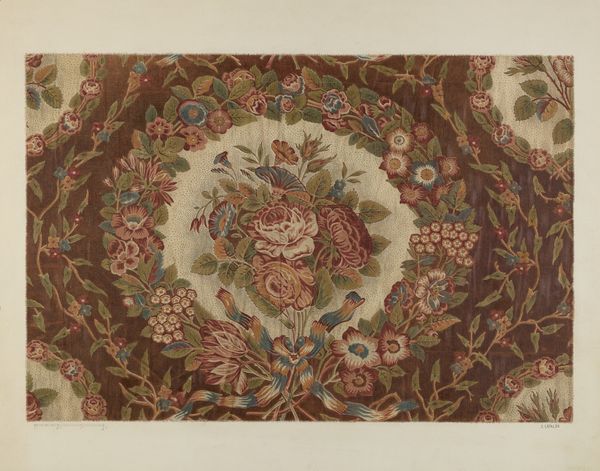
fibre-art, textile
#
fibre-art
#
water colours
#
textile
#
watercolor
Dimensions: overall: 43.1 x 57.4 cm (16 15/16 x 22 5/8 in.)
Copyright: National Gallery of Art: CC0 1.0
Editor: Here we have Eleanor Cunningham’s “Embroidery” from around 1937. It appears to be a textile work incorporating painting and drawing, featuring watercolor. The colour palette is soft yet vibrant. The abundance of floral elements and its somewhat weathered state create an intriguing romantic atmosphere. What underlying themes do you observe? Curator: It is definitely romantic in its subject matter and execution. But let's think about "Embroidery" as existing within a very specific socio-political framework. This piece was created during the interwar period; given that the artist is a woman, what implications does this context carry for us? Think about how artistic expression, particularly domestic craft like embroidery, could be viewed as a form of resistance or personal empowerment during this period. Editor: Interesting. So, perhaps choosing a traditionally “feminine” craft like embroidery, was her conscious statement? Curator: Exactly. By engaging with this medium, Cunningham potentially subverts its conventional association with domesticity and subordination. She is not only producing a beautiful object but also asserting her presence and voice within a patriarchal society. Now consider the floral motif, how might it function beyond mere aesthetics? Editor: Flowers often represent growth, beauty, fragility… could it be a statement about the female experience? Curator: Precisely! The flowers become symbols of resilience, mirroring women who navigated a rapidly changing society. This is further intensified when we examine the colours; against the intense ground, soft pinks fight their way to visibility and recognition. The pattern of growth that’s replicated becomes its own system. This textile serves not only as a pretty decoration, but as a site where gendered power dynamics and expressions of identity intersect. What’s your final impression? Editor: It really reframes the whole piece for me, knowing it may have these deeply personal, even radical roots. Thanks for shedding light on the historical layers within such a seemingly conventional work. Curator: Absolutely. It highlights the power of art to serve as a silent yet potent form of social and political commentary.
Comments
No comments
Be the first to comment and join the conversation on the ultimate creative platform.
